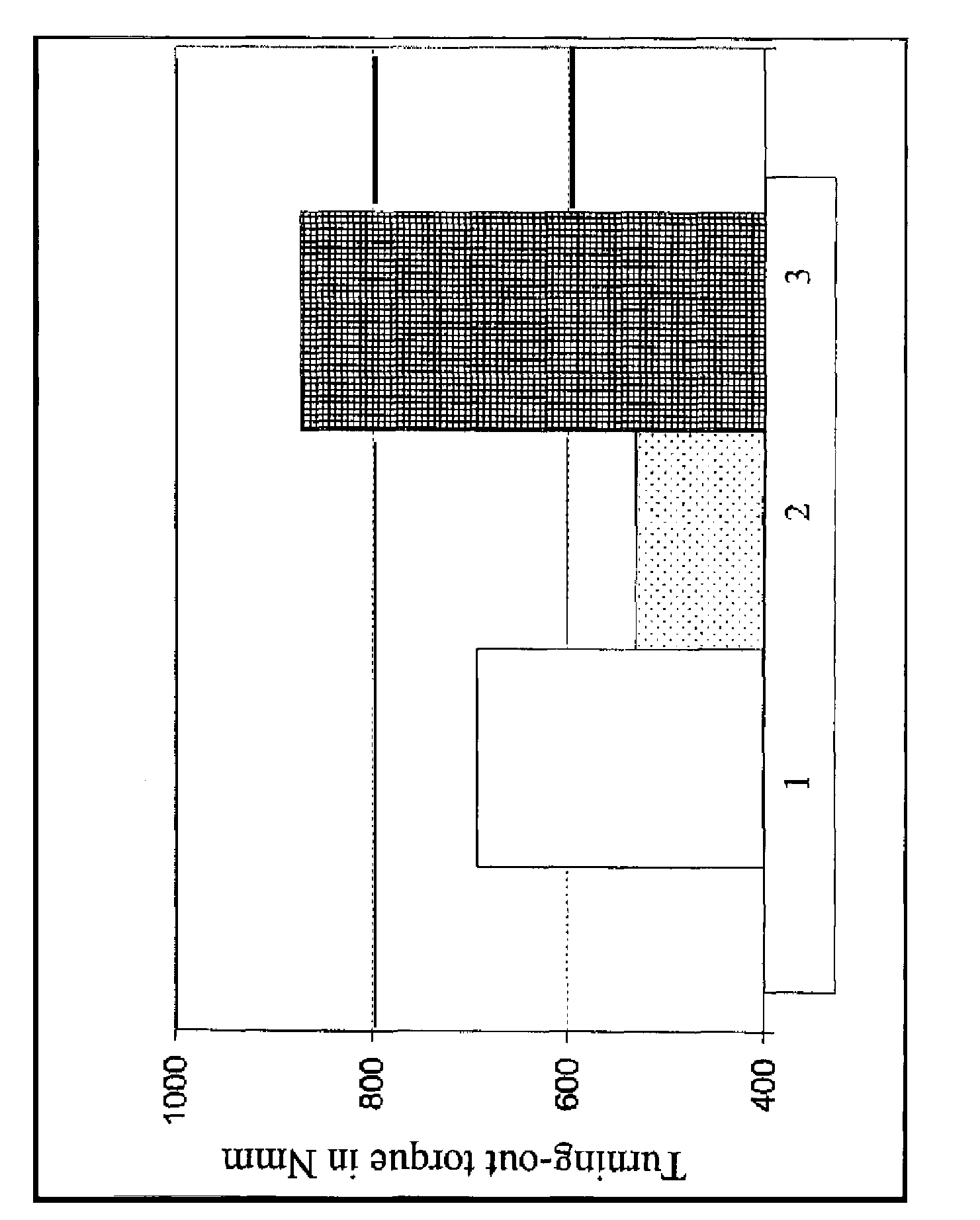Implant and production method for said implant
a technology of implants and production methods, applied in the field of implants, can solve the problems of poor adhesion of bisphosphonates on metallic surfaces, inability to be used in biocides, plant growth regulators, etc., and achieve the effect of simple and cost-efficient process, good and complication-free osteointegration
- Summary
- Abstract
- Description
- Claims
- Application Information
AI Technical Summary
Benefits of technology
Problems solved by technology
Method used
Image
Examples
Embodiment Construction
[0058]The following examples are for the purpose of further illustrating the invention without limiting the same. Variations of the introduced embodiments, as they are comprised by the following claims, are available to the person skilled in the art within the scope of his technical professional knowledge, and accordingly the embodiments depicted below shall not be used for the limitation of the scope of protection provided by the claims, but shall only be interpreted for supportive purposes.
Production of an Alendronic Acid Stearate Salt
[0059]100 mg (0.3076 mmol) of sodium alendronate are solubilized in 10 ml of water at 80° C. and added to a solution of 94.3 mg (0.3076 mmol) of sodium stearate in 5 ml of water (solubilized at 80° C.). The milky suspension formed thereby is stirred for over 18 hours at 80° C. under inert conditions. The suspension is subsequently centrifuged for 10 min at 14000 U / min. After removal of the supernatant the precipitate is washed with distilled water an...
PUM
| Property | Measurement | Unit |
|---|---|---|
| solubility | aaaaa | aaaaa |
| thickness | aaaaa | aaaaa |
| temperature | aaaaa | aaaaa |
Abstract
Description
Claims
Application Information
 Login to View More
Login to View More - R&D Engineer
- R&D Manager
- IP Professional
- Industry Leading Data Capabilities
- Powerful AI technology
- Patent DNA Extraction
Browse by: Latest US Patents, China's latest patents, Technical Efficacy Thesaurus, Application Domain, Technology Topic, Popular Technical Reports.
© 2024 PatSnap. All rights reserved.Legal|Privacy policy|Modern Slavery Act Transparency Statement|Sitemap|About US| Contact US: help@patsnap.com








